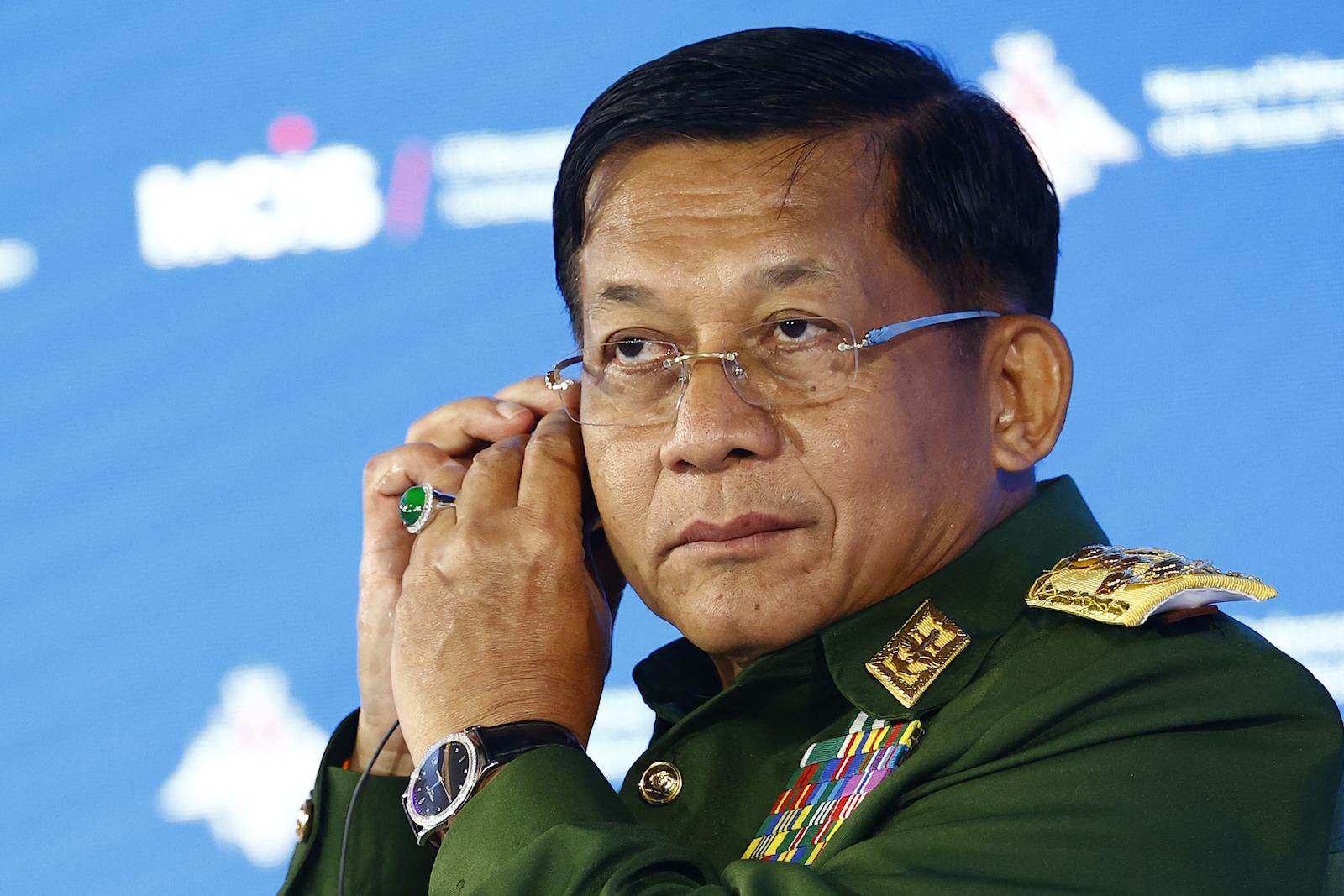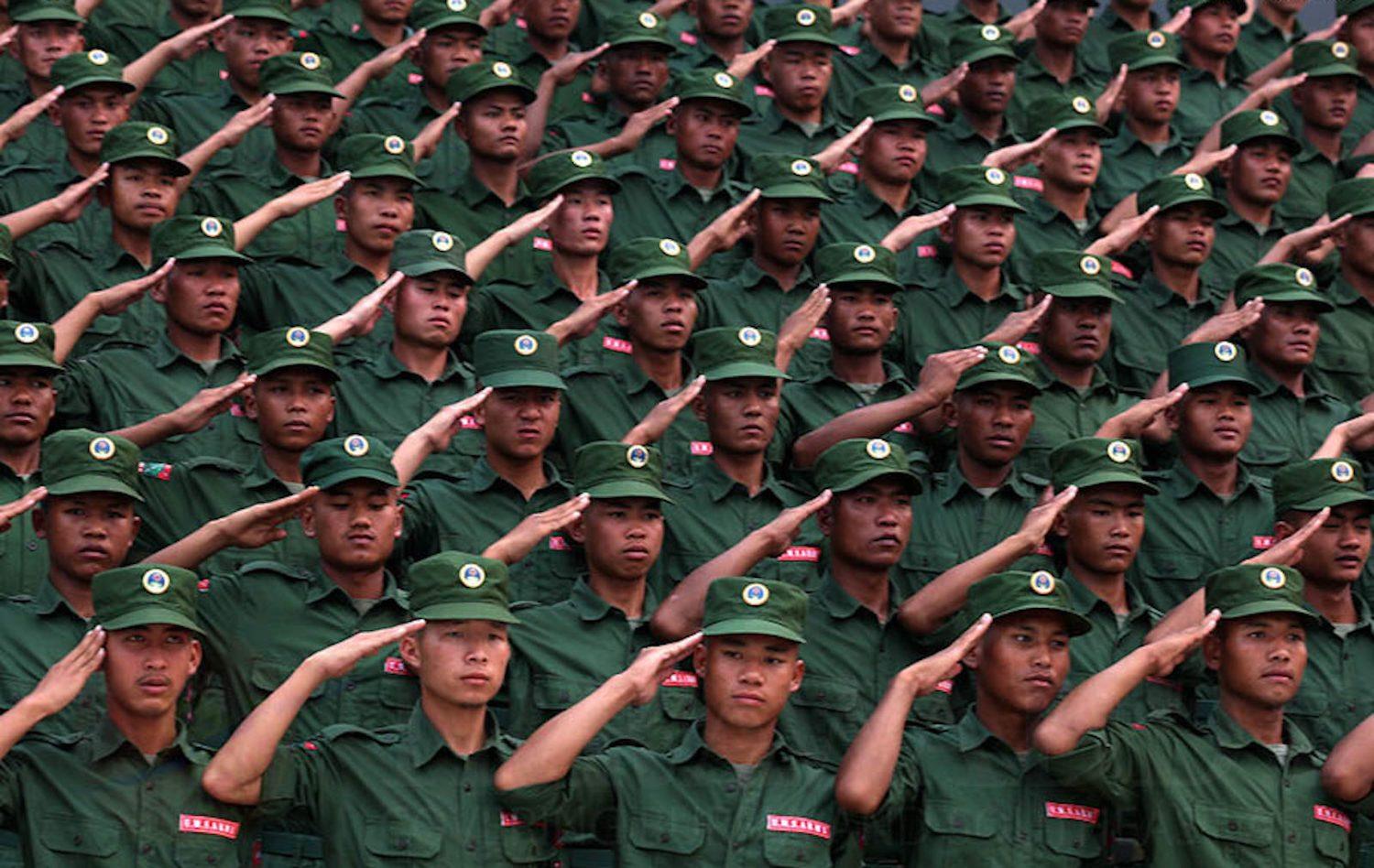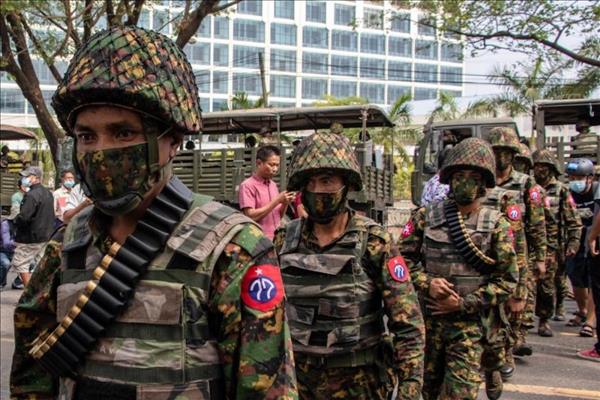
Myanmar's 'Peace Talks' A Dangerous Diversion
Myanmar is in conflict freefall, as the State Administration Council (SAC) junta regime fights a myriad of proliferating resistance groups on fronts across the country, many galvanized to arms by the military's democracy-toppling February 2021 coup.
Fighting in western regions such as Sagaing, Magwe and Chin State has surged in recent months, as scores of People's Defense Forces (PDFs) ambush military columns and battle pro-SAC militias.
The military, in turn, has pulverized civilian villages with air strikes, heavy artillery and army columns in expeditionary arson campaigns that have destroyed close to 20,000 houses, by some estimates. Internal displacement in the country, meanwhile, has surpassed one million.
Despite the desperation of the humanitarian and human rights catastrophe, many analysts estimate that the military has been seriously degraded by armed resistance to the coup . That's been led by PDFs and many established ethnic armed organizations (EAOs) such as the Karen National Union (KNU), some of which have forged alliances with or otherwise pledge loyalty to the National Unity Government (NUG), a parallel administration formed after the coup.
So what does the SAC leadership do when faced with such unprecedented and geographically spread resistance? Logically, it calls for peace talks, the tried and true escape hatch for military repression in Myanmar.
Myanmar's Nationwide Ceasefire Agreement (NCA) was signed by eight mostly small organizations in 2015 (another two signed in 2018), but despite incessant talks and secretive mediation, the agreement was moribund by October 2018.
The military commander Senior General Min Aung Hlaing, the current dictator who staged the 2021 coup, announced a “Ceasefire for Eternal Peace” in December 2018, extending it every few months for years through the Covid-19 pandemic right up to the coup, even as fighting raged with EAOs in many parts of the country.
The call for new peace talks in April this year conforms to a consistent pattern of perfidy over peace talks. Using a motley crew of desperate or insignificant NCA signatories is for the SAC desperate political necrophilia.

Myanmar's coup maker Senior General Min Aung Hlaing attends the 9th Moscow Conference on International Security in Moscow, Russia on June 23, 2021. Photo: AFP via Anadolu Agency / Sefa Karacan
The first round of“talks” in May was with Chairman Yawd Serk of the insurgent Restoration Council of Shan State (RCSS) resulted in a number of agreements related to the“Union Accords”, which were negotiated for several years in a pre-coup process.
The RCSS's eagerness can be largely explained by its strategic missteps since late 2015. It used the cover of signing the 2015 NCA as a pretext to expand operations in northern Shan state, triggering a multi-sided conflict for control of territory and commodities between various EAOs, especially the ethnic Ta'ang armed group and the RCSS parent organization the Shan State Army (SSA) formed in 1964.
This conflict displaced thousands of civilians, many for several times a year, disrupting livelihoods and trade and exacerbating intercommunal tensions amid aid restrictions by the military and previous government. The RCSS has decided to sit out the post-coup resistance and prioritize its own survival now that it has been restricted to territory closer to the Thailand border.
The arrival of Saw Mra Razar Lin of the Arakan Liberation Party (ALP) at the junta's peace talks was particularly surreal. The only senior woman leader of an EAO to attend peace talks for several years, she commands few troops, most of which are based on the Thailand-Myanmar border far away.
The ALP and its armed wing are meaningless compared to the ethnic Rakhine Arakan Army (AA) , which is estimated to field more than 8,000 troops. In heavy fighting between 2019 to the end of 2020, AA fought the Myanmar military to a standstill, inflicting hundreds if not thousands of casualties during a conflict that displaced some 200,000 civilians.
An uneasy ceasefire has allowed space for the AA to expand its own judicial and taxation system on an estimated 60% of western Rakhine state, incorporating Rohingya Muslim representatives of the Arakan People's Authority (APA).
The AA suffered a blow on July 4 when an air strike killed six of its soldiers in a base in Kayin state close to the Thailand border, raising new questions about the durability of their uneasy post-coup ceasefire.
Other groups that attended the talks included the Karen National Union/Karen National Liberation Army Peace Council, the Democratic Karen Benevolent Army (DKBA), the New Mon State Party and the Pa-O Nationalities Liberation Organization (PNLO).
These groups could potentially muster several hundred troops combined among them, but they have essentially been artificially inflated by Western donors to the peace process for several years. They are now ornamental bit-part actors in the SAC's shoddy process.

United Wa State Army soldiers in a collective salute. Photo: Twitter
The largest EAO in Myanmar, the United Wa State Army (UWSA), controls its own autonomous region on the Chinese border with an estimated 30,000 troops and sophisticated weaponry, and didn't really need to attend the peace talks.
It dispatched a nominally senior official of no real significance in the hierarchy, and released a statement following the talks which basically stated that the Wa had their own autonomy and this was a Burman problem they wanted nothing to do with.
Planned talks with the Shan State Progress Party, or SSA, have not been held as fighting continues between their forces and the SAC's army in northern Shan State.
In another indication of renewed bellicosity, well-known Myanmar model and actress Thin Zar Wint Kyaw has reportedly been arrested after wearing an SSA military uniform at a recent wedding ceremony close to the EAO's headquarters at Wan Hai, after traveling to the area to endorse business initiatives. The SAC is making enemies of everyone, even as it supposedly cultivates peace.
Further adorning the pretense of peace talks, the SAC has called for PDF members, or people involved in the civil disobedience movement (CDM), to defect from the“terrorist” NUG and return to the“legal fold”, a euphemism for the peace process of the 1990s which resulted in reduced conflict fighting but no conflict resolution.
The SAC in recent days has even pledged to open“reception centers” for resistance actors to surrender along the borders, another indication of the junta's underlying desperation.
The subterfuge of peace talks extends to efforts at mediation by the Association for Southeast Asian Nations (ASEAN), whose Special Envoy Prak Sokhonn visited Myanmar recently and was instructed to only meet with EAOs who had attended the SAC talks.
This clearly violates the terms of the Five Point Consensus the SAC's leader reached with ASEAN in April 2021:“constructive dialogue among all parties concerned shall commence to seek a peaceful solution in the interests of the people.”
ASEAN is further compromised by the role of the ASEAN Humanitarian Center (AHA) , which is conducting a needs assessment essentially as cover for the United Nations to operate in SAC-controlled areas and not areas of armed conflict where belligerents who are not part of the peace talks operate, and where civilian communities and aid workers are not represented and rely on cross border assistance not covered by the AHA or the UN.

Myanmar protesters carry signs calling on ASEAN not to endorse the junta's new election plan. Picture: APHR
The NUG and main EAOs fighting the SAC issued a bitter statement condemning the role of ASEAN in humanitarian aid delivery in May, as the exercise was seen as clearly pro-SAC.
Myanmar's military leaders may lack sophistication but they possess the cunning to checkmate rule-bound international aid actors, consistent with the past decade during the previous peace process.
A serious danger is that peace talks, alongside SAC announced plans for a nationwide election in 2023 with an entirely new electoral system that will likely ban the coup-ousted National League for Democracy's participation, provide the bare minimum of a lifeline for the international community, especially the UN and international aid agencies, to justify their continued presence.
It is perilous to promote fake peace while a conflict is raging elsewhere. The only accurate gauge of the SAC's true intent is its behavior on the ground, seen in the thousands of civilian casualties, burning villages and interdiction of humanitarian assistance. In Myanmar, talk of peace is often cover for just more war.
David Scott Mathieson is an independent analyst working on humanitarian, conflict and human rights issues in Myanmar

Legal Disclaimer:
MENAFN provides the
information “as is” without warranty of any kind. We do not accept
any responsibility or liability for the accuracy, content, images,
videos, licenses, completeness, legality, or reliability of the information
contained in this article. If you have any complaints or copyright
issues related to this article, kindly contact the provider above.


















Comments
No comment